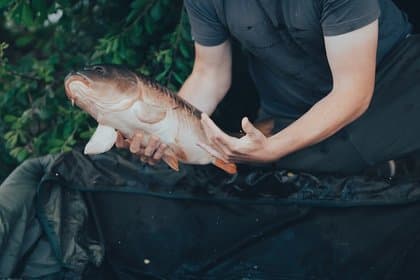The Invasive Nature of Carp in Australia: Impact and Control Measures
Carp (Cyprinus carpio) is a species of freshwater fish that was introduced to Australia in the early 19th century as a potential food source. However, it quickly became an invasive species and has caused significant ecological damage to the Australian freshwater ecosystems. This article explores the ecological impact of carp in Australia, their distribution and spread, and the control measures implemented to address the issue.

Carp (Cyprinus carpio) is a species of freshwater fish that is native to Europe and Asia. In the early 19th century, they were introduced to Australia as a potential food source for both humans and animals. However, carp quickly became an invasive species and have caused significant ecological damage to the Australian freshwater ecosystems.
Ecological Impact
Carp are known to have a negative impact on native fish species and aquatic plants. They are efficient foragers and can outcompete native fish for food and habitat. They also have a voracious appetite for aquatic vegetation, which can lead to the destruction of important habitats for native fish and other aquatic species. Carp are also known to consume the eggs and fry of native fish, which can greatly reduce the recruitment of native fish populations.
Carp are also known to contribute to the degradation of water quality. They are bottom feeders and stir up sediments, which can lead to increased turbidity and reduced light penetration in the water. This can negatively impact aquatic plants and other aquatic organisms that require clear water and sunlight to survive. In addition, carp excrete high amounts of nutrients which can cause excessive growth of phytoplankton and aquatic plants, leading to eutrophication and reduced water clarity.
Carp can also have an impact on recreational activities as they can create muddy conditions, which can make swimming, boating and fishing difficult. Additionally, they can cause damage to infrastructure such as dams, locks and weirs.
Distribution and Spread
Carp have been introduced to many parts of Australia and have established populations in most states and territories, with the exception of the Northern Territory. They have been able to colonize a wide range of habitats including rivers, lakes, and billabongs. Carp can also tolerate a wide range of environmental conditions, from fresh to brackish water and from cool to warm temperatures, which allows them to establish in diverse aquatic systems.
Carp have also been known to spread through human-assisted means, such as by being transported by anglers and through the release of unwanted pet fish into waterways. This human-assisted spread has contributed to the rapid expansion of carp populations in Australia.
Control Measures
To control the population of carp in Australia, several methods have been employed. One of the most common methods is the use of commercial fishing methods such as netting and electrofishing. However, these methods are not always effective, and carp populations continue to thrive.
Another approach is the use of biological control methods, such as the introduction of carp-specific viruses or parasites. One example is the carp herpesvirus, which has been shown to cause significant mortality in carp populations. However, there are concerns that the use of biological control methods may have unintended consequences and may harm non-target species. An integrated management approach that combine different methods, such as habitat restoration, physical barriers, and biocontrols have been suggested as the most effective way to control carp populations.
Additional Information
- Carp can live for up to 20 years and can grow up to 1.5m in length and weigh up to 40kg.
- Carp are known to produce up to 1 million eggs per kg of body weight, which allows them to reproduce quickly and in large numbers.
- Carp have a unique ability to produce a slime coat, which can protect them from predators and parasites.
- Carp can also tolerate a wide range of water temperatures and oxygen levels, which allows them to survive in conditions that would be lethal to many native fish species.
Conclusion
In conclusion, carp are considered invasive and a pest in Australia due to the significant ecological damage they cause to freshwater ecosystems. They outcompete native fish for food and habitat, consume aquatic vegetation and native fish eggs and fry, contribute to water quality degradation and damage infrastructure. Carp have been introduced to most states and territories in Australia and have been able to establish populations in diverse habitats. Control measures such as commercial fishing, biological control and habitat restoration have been implemented, but an integrated management approach that combines different methods is considered the most effective way to control carp populations. Additionally, it's important to raise awareness about the impact of invasive species and encourage responsible behavior like not releasing pet fish into the wild.
No comments yet, be the first to share your thoughts!
Newsletter
Sign up for our newsletter and stay up-to-date on the latest tips, tricks, and techniques in carp fishing. From beginner to expert, our newsletter offers something for every level of angler. Do not miss out on exclusive content, product reviews and fishing reports that will help you catch more carp.
Related Posts
Kōhaku (Fish) - A Comprehensive Guide
almost 3 years ago
Carp Fishing Knots - A Comprehensive Guide
almost 3 years ago
London's Hidden Scales: 20 Carp Fishing Havens in the Capital and Beyond
over 1 year ago
Stay Dry on Your Fishing Trip: 10 Best Waterproof Fishing Boots
almost 3 years ago
Carp Fishing Gear: A Comprehensive Guide to Finding the Best Deals in USA and UK
almost 3 years ago
Lead Weights 101: A Beginner's Guide to Carp Fishing Equipment
almost 3 years ago